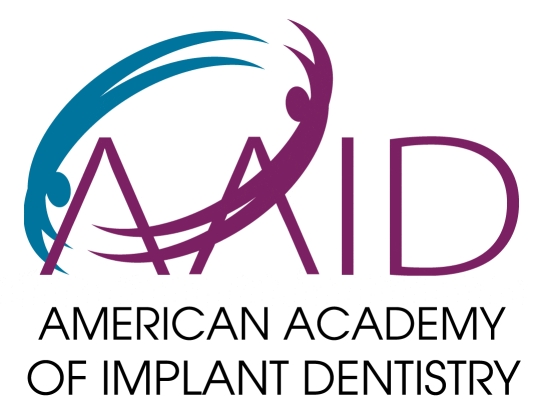Can I get Invisalign after braces, and is it possible to switch from traditional orthodontic treatment to clear aligners for additional correction? As a dentist at Lansdowne Family Dental with over a decade of experience in orthodontic care, I regularly work with patients who completed braces treatment years ago but now find themselves considering Invisalign for various reasons. The encouraging answer is yes – in most cases, you absolutely can pursue Invisalign treatment even after having traditional braces.
This scenario is more common than many people realize, as teeth naturally shift over time regardless of previous orthodontic intervention. Whether you’re dealing with minor relapse, never achieved your ideal results with braces, or simply want to address new concerns that have developed since your original treatment, Invisalign can often provide an effective solution.
In this comprehensive guide, we’ll explore the reasons why patients seek orthodontic retreatment, examine how Invisalign serves as an excellent option for post-braces correction, discuss the evaluation process for determining candidacy, and outline what you can expect throughout your second orthodontic journey toward achieving the smile you’ve always wanted.
Invisalign as a Solution for Previously Treated Teeth
If your teeth have shifted since having braces, Invisalign can be an excellent option to realign them. Let’s explore why Invisalign might be particularly suitable for retreatment and what you can expect from the process.
Advantages of Invisalign for Retreatment
- Aesthetics: Invisalign aligners are clear and nearly invisible, making them a popular choice for adults who want to maintain a professional appearance. This is particularly beneficial for those who may feel self-conscious about undergoing orthodontic treatment again.
- Comfort: Many patients find Invisalign more comfortable than traditional braces. The smooth plastic aligners don’t have sharp edges that can irritate your cheeks and gums.
- Removability: You can remove the aligners for eating and oral hygiene, avoiding the dietary restrictions and complex cleaning routines associated with braces. This feature is especially appreciated by adults who’ve experienced the challenges of traditional braces in the past.
- Potentially Shorter Treatment Time: If your teeth haven’t shifted significantly, your Invisalign treatment might be shorter than your initial orthodontic treatment. Many of our patients complete their retreatment in 6-12 months.
- 3D Treatment Planning: Invisalign uses advanced 3D imaging technology, allowing us to show you a virtual representation of how your teeth will move throughout the treatment process.

The Invisalign Process: What to Expect
If you choose Invisalign for retreatment, here’s a detailed look at what you can expect:
1. Initial Consultation:
- We’ll examine your teeth, take X-rays, and discuss your goals.
- We’ll review your previous orthodontic treatment and why your teeth may have shifted.
- We’ll determine if Invisalign is the best option for your specific case.
2. Custom Treatment Plan:
- Using 3D imaging technology, we’ll create a personalized treatment plan.
- You’ll be able to see a virtual representation of how your teeth will move during treatment.
- We’ll discuss the estimated treatment duration and what to expect at each stage.
3. Receiving Your Aligners:
- Your custom-made aligners will be created based on your treatment plan.
- We’ll show you how to insert and remove them properly.
- We’ll provide care instructions for your aligners.
4. Wearing Your Aligners:
- You’ll wear each set of aligners for about two weeks, 20-22 hours per day.
- You’ll remove them only for eating, drinking anything other than water, and oral hygiene.
5. Regular Check-ups:
- You’ll visit us every 6-8 weeks to monitor your progress.
- We’ll provide you with new sets of aligners at these appointments.
- We can make adjustments to your treatment plan if necessary.
6. Refinement (If Needed):
- After the initial series of aligners, we may need to do some fine-tuning.
- This might involve a few more weeks of aligner wear to perfect your smile.
7. Retention:
- After treatment, you’ll need to wear a retainer to maintain your results.
- We’ll discuss different retainer options and create a retention plan that works for you.
5 Important Considerations for Invisalign Retreatment
While Invisalign can be effective for many patients who’ve previously had braces, there are some factors to consider:
1. Severity of Misalignment:
- Mild to moderate cases can often be treated within 6-12 months.
- More severe cases may take up to two years.
- Some complex cases might still be better suited to traditional braces.
2. Commitment:
- Invisalign requires discipline to wear the aligners for 20-22 hours daily.
- Inconsistent wear can prolong treatment or affect results.
3. Cost:
- The cost of Invisalign is often comparable to traditional braces.
- It may be lower if you only need minor corrections.
- We offer flexible payment plans to make treatment more accessible.
4. Dental Work:
- If you’ve had other dental work since your braces (like implants or bridges), we’ll need to take this into account when planning your Invisalign treatment.
- In some cases, existing dental work might limit tooth movement in certain areas.
5. Age Considerations:
- Invisalign can be effective for adults of all ages.
- However, treatment times might be longer for older adults due to slower bone remodeling.
Why Teeth Might Shift After Previous Orthodontic Treatment?
It’s crucial to understand why teeth might shift after previous orthodontic treatment. This knowledge will help you prevent future shifts and make informed decisions about your oral health.
1. Inconsistent Retainer Use
One study revealed that one in five patients stopped wearing their retainers within 19 to 24 months of finishing orthodontic treatment. This is the most common reason for teeth shifting back. Here’s why retainers are so important:
- Bone Remodeling: After braces, your teeth need time for the bone to rebuild and stabilize around their new positions.
- Muscle Memory: Your facial muscles and tongue can exert pressure on teeth, potentially moving them back to their original positions.
- Preventing Relapse: Consistent retainer use, especially in the first year after braces, is crucial for maintaining your new smile.
2. Natural Aging Process
As we age, several factors can contribute to tooth movement:
- Bone Density Changes: Our bones, including our jaws, can lose density over time, which can affect tooth positioning.
- Gum Recession: As gums recede, teeth may shift to compensate for the changes in support.
- Wear and Tear: Natural wear on teeth can change how they fit together, potentially causing shifts in alignment.
3. Wisdom Teeth
The eruption of wisdom teeth can sometimes cause shifts in tooth alignment. Here’s what you need to know:
- Space Issues: If there isn’t enough room in the jaw, erupting wisdom teeth can push other teeth out of alignment.
- Preventive Measures: Regular dental check-ups can help monitor wisdom tooth development and determine if removal is necessary to prevent alignment issues.
4. Bad Habits
Certain habits can put pressure on teeth, causing them to shift over time:
- Teeth Grinding (Bruxism): This can wear down teeth and cause them to shift.
- Tongue Thrusting: Pushing your tongue against your teeth can gradually move them out of alignment.
- Mouth Breathing: Chronic mouth breathing can alter the resting position of your tongue, potentially affecting tooth alignment.
5 Preventing Future Shifts: Long-Term Care After Invisalign
To maintain your results after Invisalign treatment, it’s crucial to follow these steps:
1. Wear Your Retainer as Directed:
- Initially, you may need to wear your retainer full-time, except when eating or cleaning your teeth.
- Over time, we may reduce this to nighttime wear only.
- Never stop wearing your retainer completely without consulting us.
2. Maintain Good Oral Hygiene:
- Brush twice daily and floss at least once a day.
- Consider using an interdental brush or water flosser for thorough cleaning.
3. Regular Dental Check-ups:
- Visit us every 6 months for cleanings and check-ups.
- We’ll monitor your tooth alignment and address any issues early.
4. Address Grinding or Clenching:
- If you grind your teeth, we may recommend a night guard to protect your alignment.
- Stress-reduction techniques can also help minimize grinding and clenching.
5. Be Proactive:
- If you notice any changes in your bite or alignment, contact us promptly.
- Early intervention can prevent minor shifts from becoming major problems.
Frequently Asked Questions About Invisalign After Braces
To address some common concerns our patients have about getting Invisalign after previous orthodontic treatment:
- Q: Will Invisalign work as well as braces did the first time? A: In most cases, yes. Invisalign technology has advanced significantly and can handle most orthodontic issues as effectively as braces.
- Q: How long will I need to wear Invisalign if I’ve had braces before? A: Treatment time varies, but many patients complete retreatment in 6-18 months, often shorter than their initial treatment with braces.
- Q: Will I need attachments or elastics with Invisalign? A: Possibly. Some cases require small tooth-colored attachments or elastics to achieve specific movements. We’ll discuss this during your consultation if they’re needed.
- Q: Can Invisalign fix bite issues as well as braces? A: Yes, Invisalign can address many bite issues, including overbites, underbites, and crossbites. However, very severe bite problems might still require traditional orthodontics.
- Q: Is Invisalign painful? A: Most patients experience mild discomfort for a day or two when starting a new set of aligners. This is typically less intense than the discomfort associated with braces adjustments.
Conclusion: A Second Chance at Your Ideal Smile
At Lansdowne Family Dental, we believe it’s never too late to achieve the smile you desire. If your teeth have shifted since having braces, Invisalign offers a discreet, comfortable, and effective solution to realign your smile. With advanced technology, customized treatment plans, and our experienced team, we can help you regain the straight, beautiful smile you once had.
Remember, every case is unique. If you’re considering Invisalign after having braces in the past, I encourage you to schedule a consultation with us. We’ll examine your teeth, discuss your goals, and determine the best treatment plan for your individual needs. We’ll also address any concerns you may have about retreatment and ensure you feel confident in your decision.
Don’t let past orthodontic treatment hold you back from achieving the smile you want. With Invisalign, you have a second chance at a beautifully aligned smile that you can maintain for life. Let’s work together to make it happen!
Your journey to a straighter, healthier smile starts here at Lansdowne Family Dental. We’re committed to providing you with the highest quality of care and the most advanced orthodontic solutions available. Contact us today to take the first step towards your ideal smile!






